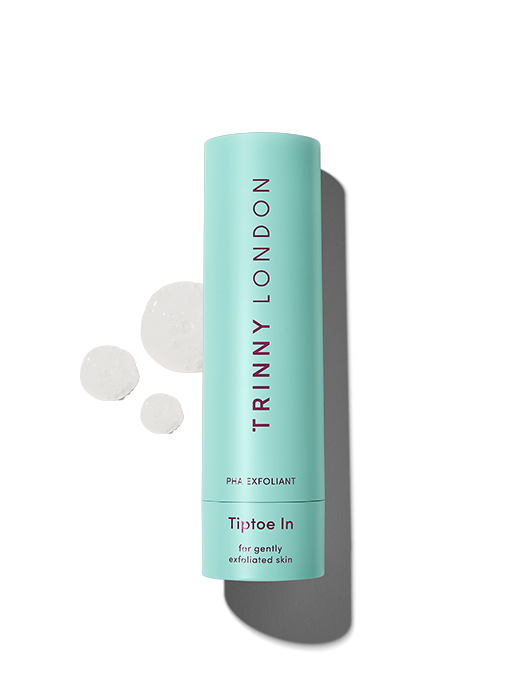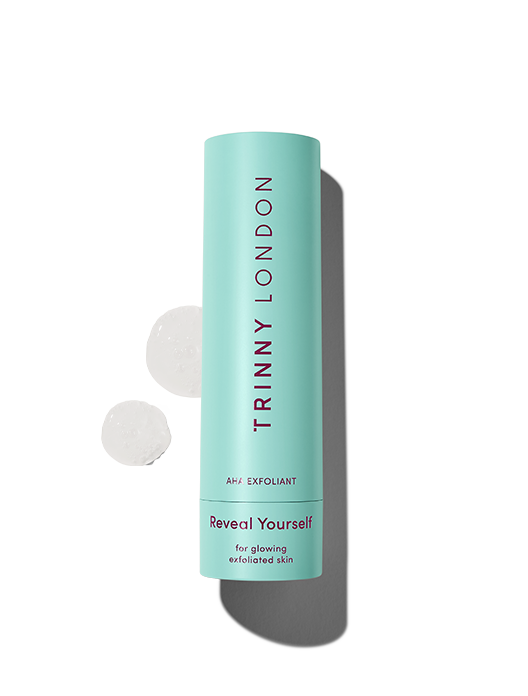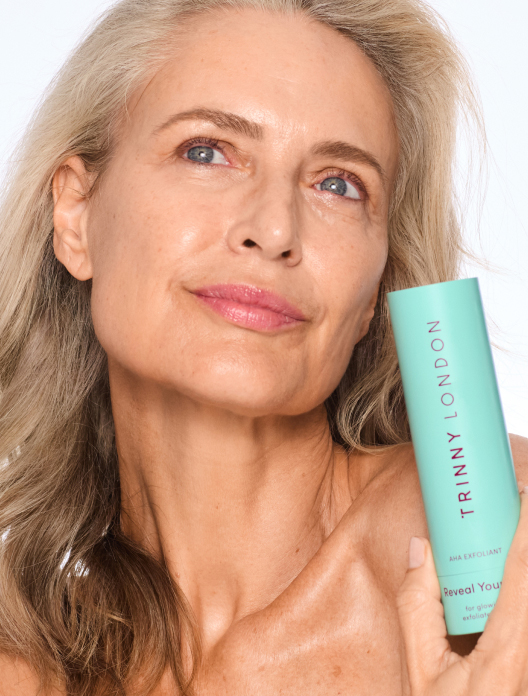

Tiptoe In
Dieses hautfreundliche Peeling schenkt dir strahlende Haut und ist für alle Hauttypen geeignet
Get a free Tiptoe In Mini Exfoliator when you spend €115*
Kostenlose Standardlieferung bei Bestellungen über 150 €

Alpha-hydroxy acids are used in skincare as liquid exfoliants (also known as acids and chemical exfoliants) that break down the glue holding dead skin cells to the surface of your complexion. By whisking away these dead skin cells, AHAs reveal the fresher, younger skin beneath, as well as reducing the appearance of fine lines and hyperpigmentation. The most commonly used ingredients classified as alpha-hydroxy acids are:
Glycolic acid
Lactic acid
Malic acid
Mandelic acid
Citric acid
Not all alpha-hydroxy acids are created equal, with varying strengths across the spectrum. Glycolic acid has the smallest molecule size, meaning it can travel quickest and deepest into the skin. Picture it like a tiny grain of risotto rice sneaking through the holes in a colander. Glycolic acid packs a punch, which brings with it a tendency to more easily irritate skin. Other AHAs, including lactic, malic and mandelic acid have an ever-so-slightly larger molecule size, offering the same glow-getting results, but with less chance of redness or discomfort.
Alpha-hydroxy acids are best suited to skin that is normal to dry, and those who want to target dehydration, dullness or fine lines. The results from AHAs are seriously impressive, and you can see the difference overnight. Expect to hear questions like “have you been away?” as friends try to decipher how you’re looking quite so rested and refreshed.
However, AHAs do come with a caveat. With great results comes great responsibility, and alpha-hydroxy acids are only really suitable for experienced acid users. If you’re new to the wonderful world of chemical exfoliants, start with more gentle PHAs first, slowly building up your usage as your skin adapts. Only once your skin is tolerating these lower strengths should you try to upgrade to AHAs. Think of it like baking. You probably wouldn’t attempt a three-tier wedding cake as your first ever project, rather building up to it with cupcakes and cookies first.
Just like alpha-hydroxy acids, poly-hydroxy acids are also liquid exfoliants and do a brilliant job of dusting away dead skin cells from the surface of your complexion. The most commonly used poly-hydroxy acids are:
Lactobionic acid
Gluconolactone
Galactose
Poly-hydroxy acids are widely considered to be the next generation of liquid exfoliants. They’re newer to the market, and therefore less widely known than alpha-hydroxy acids. The biggest selling point of poly-hydroxy acids is their larger molecule size, which means they can’t penetrate quite so easily or deeply into the skin. They offer the same smoothing and glow-giving properties as AHAs, just at a slower pace and therefore with less risk of irritation. Think of PHAs as a cappuccino and AHAs as a single espresso. You’re getting similar results, or in this case, the same hit of caffeine, with both. The poly-hydroxy acids are just gentler, and less of an acquired taste.
If the mere mention of the words “acid” or “chemical exfoliant” are enough to make your skin tingle, you’ll be pleased to hear that poly-hydroxy acids are gentle enough for all skin types. Even more sensitive skin can tolerate this ingredient, making them a good choice for first-time exfoliators. Nearly everyone will benefit from incorporating a PHA into their routine, as it acts as a friendly groundskeeper on the skin. By clearing away dead skin cells from the surface, it improves skin texture, reduces the risk of breakouts and increases luminosity.
If that wasn’t enough, PHAs have another trick up their sleeve. Similarly to some AHAs, they’re also humectants, which means they have the ability to draw moisture into the skin. Counteracting the myth that liquid exfoliants will dry out your complexion, using a PHA will actually increase hydration – especially handy during the cold winter months.
Shop the article


Dieses hautfreundliche Peeling schenkt dir strahlende Haut und ist für alle Hauttypen geeignet


Hochwirksames Peeling für gesunden Glow, für alle Hauttypen geeignet (außer sensible Haut)